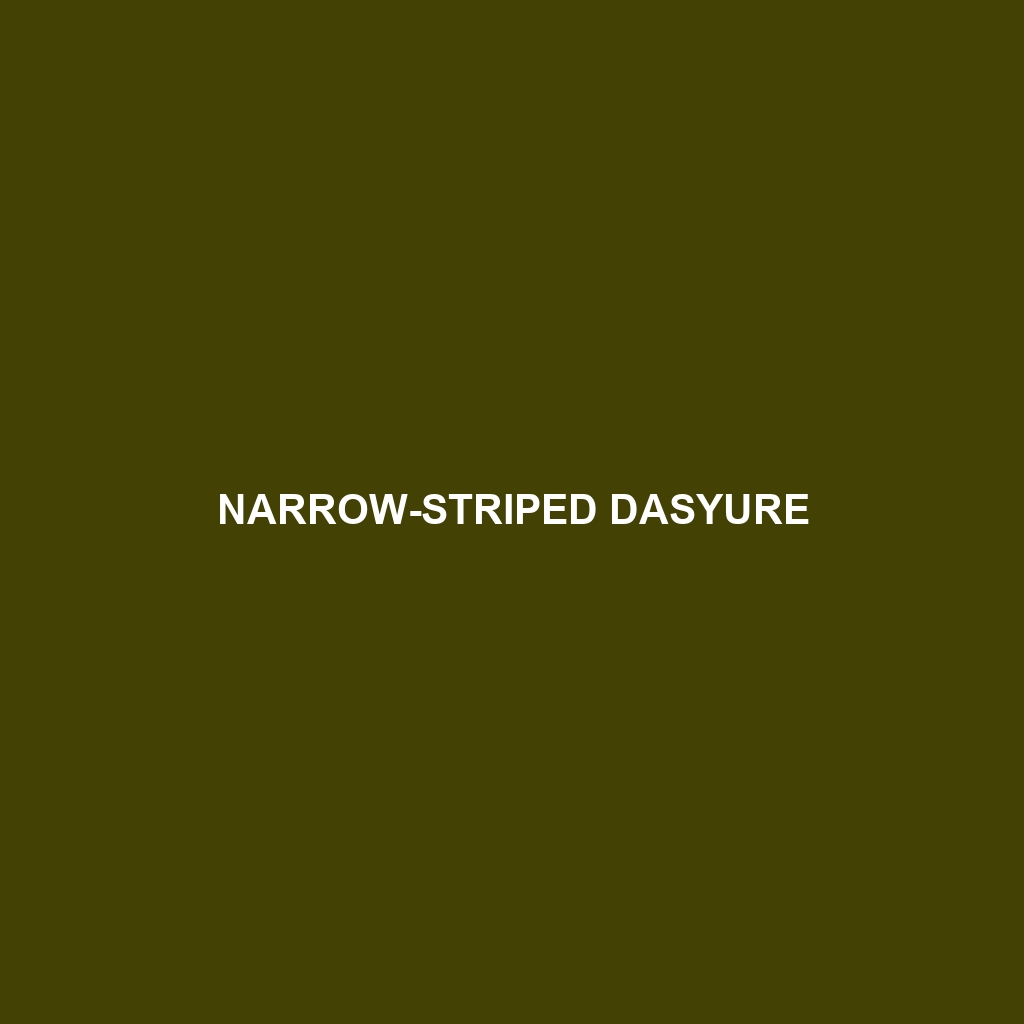Narrow-striped Dasyure (Myoictis melas)
The Narrow-striped Dasyure, also known as Myoictis melas, is a fascinating small carnivorous marsupial native to New Guinea. Recognized for its distinctive narrow stripes, this elusive creature is a member of the Dasyuridae family and showcases a blend of unique physical and behavioral traits that make it an intriguing subject for wildlife enthusiasts and researchers alike.
Physical Characteristics
Size: The Narrow-striped Dasyure is a relatively small marsupial, with a head-body length ranging from 15 to 20 centimeters (5.9 to 7.9 inches) and a tail length extending an additional 14 to 18 centimeters (5.5 to 7.1 inches). They typically weigh between 150 to 300 grams (5.3 to 10.6 ounces).
Coloration: This species exhibits a striking pelage with a combination of reddish-brown fur and distinctive narrow black stripes running longitudinally down its back, giving it its common name. The ventral side is usually lighter, often a pale cream or white.
Special Features: The Narrow-striped Dasyure has a pointed snout, sharp teeth adapted for carnivorous feeding, and dexterous paws with strong claws that aid in hunting and climbing.
Behaviors
Social Interactions: Narrow-striped Dasyures are generally solitary animals. Interactions between individuals are primarily limited to the mating season, which can result in competitive and territorial behaviors, especially among males.
Feeding Habits: As carnivores, they primarily feed on insects, small vertebrates, and occasionally fruits. Their diet includes beetles, spiders, small birds, and reptiles. They are adept hunters, using their keen sense of smell and sharp vision to locate prey.
Ecological Roles: Narrow-striped Dasyures play a critical role in controlling insect populations and maintaining the ecological balance within their habitats. They act as both predators and prey, contributing to the dynamic food web of New Guinea’s ecosystems.
Habitats
Range: This species is endemic to New Guinea, including both Papua New Guinea and the Indonesian province of Papua.
Preferred Habitats: They inhabit a variety of forested environments, ranging from lowland rainforests to montane forests up to 2,000 meters in elevation. They are also known to adapt to secondary forests and disturbed habitats, showcasing a degree of ecological flexibility.
Adaptations
Climbing Ability: Their strong, curved claws and muscular limbs enable them to climb trees effectively, allowing them to hunt for arboreal prey and escape ground-based predators.
Nocturnal Lifestyle: Narrow-striped Dasyures are primarily nocturnal, which helps them avoid daytime predators and take advantage of nocturnal prey.
Camouflage: The striped pattern of their fur provides excellent camouflage against the forest floor and tree trunks, aiding in predator evasion and stealth in hunting.
Conservation Status
Current Status: The conservation status of the Narrow-striped Dasyure is currently listed as Least Concern by the IUCN Red List. However, their populations are potentially threatened by habitat loss due to deforestation and human encroachment.
Conservation Efforts: Efforts to conserve their habitat and mitigate deforestation are crucial for maintaining stable populations. Continued research and monitoring are essential to ensure their long-term survival.
Fun Facts
Marsupial Pouch: Like other marsupials, female Narrow-striped Dasyures possess a pouch where they nurture their underdeveloped young until they are capable of independent survival.
Vocalizations: These dasyures use a range of vocalizations to communicate, including hisses, growls, and squeaks, which are often employed during territorial disputes or mating rituals.
Agility: Their agility and quick reflexes make them adept hunters, capable of capturing fast-moving prey with precision.
The Narrow-striped Dasyure is a remarkable example of the biodiversity found in New Guinea’s unique ecosystems. By understanding and appreciating their ecological roles and behaviors, we can better advocate for their conservation and the preservation of their natural habitats.
